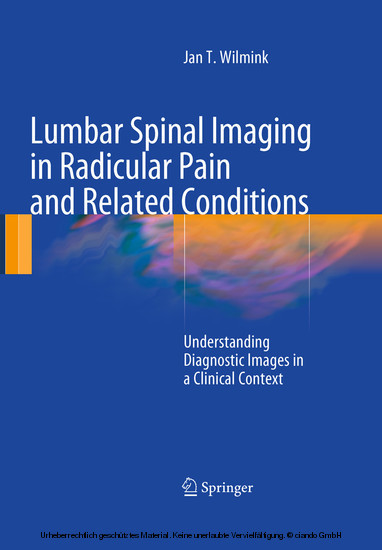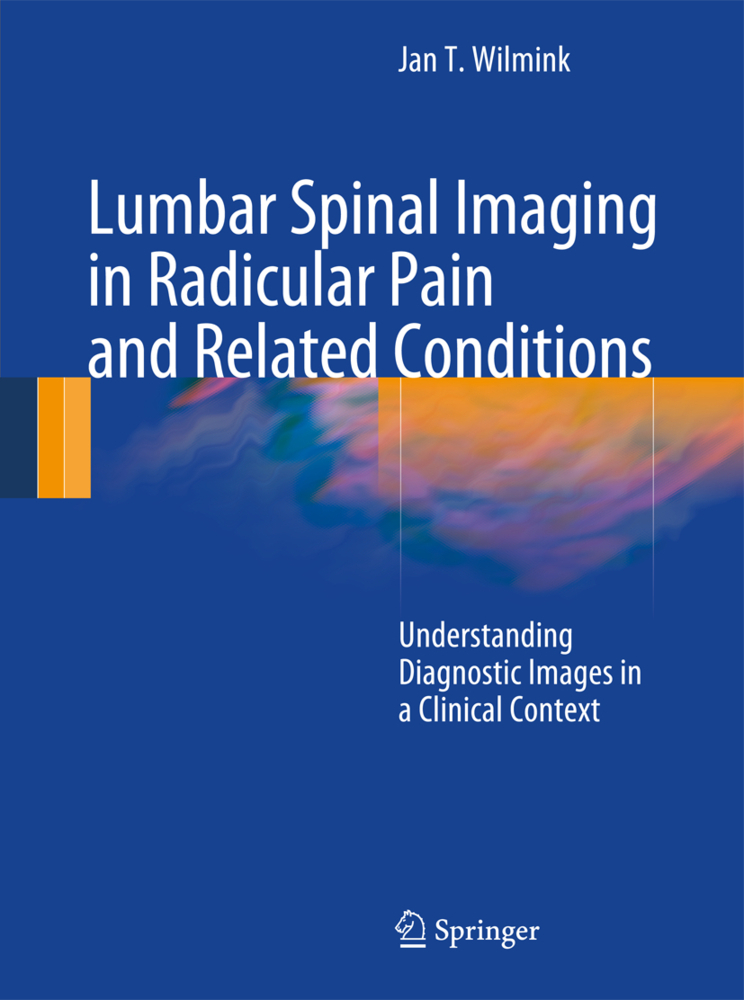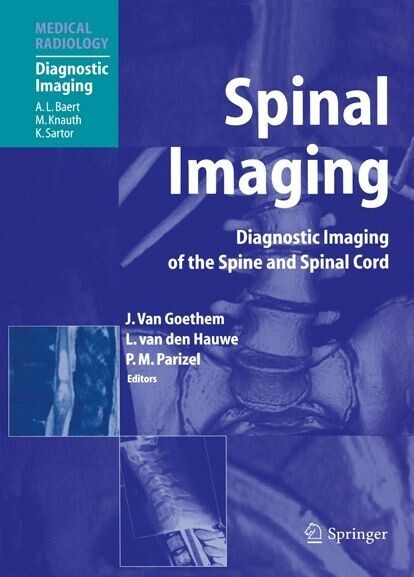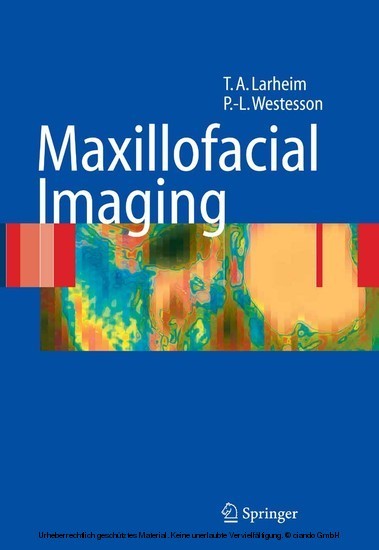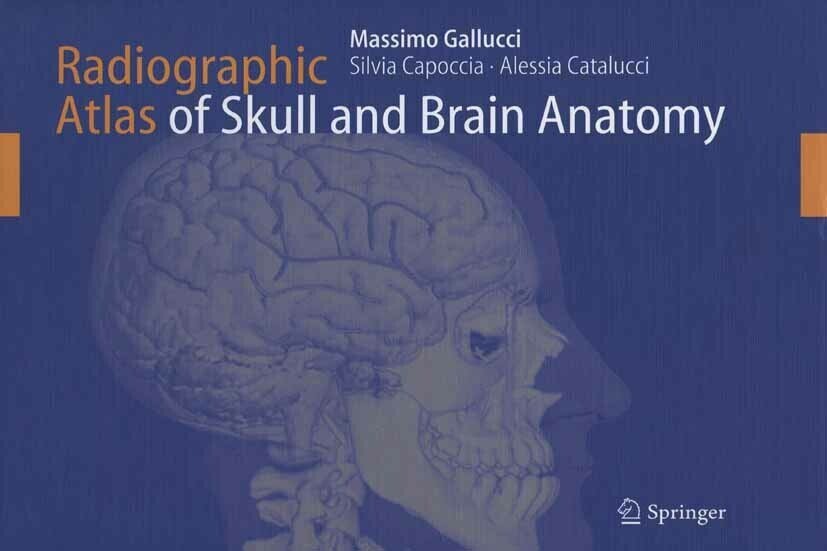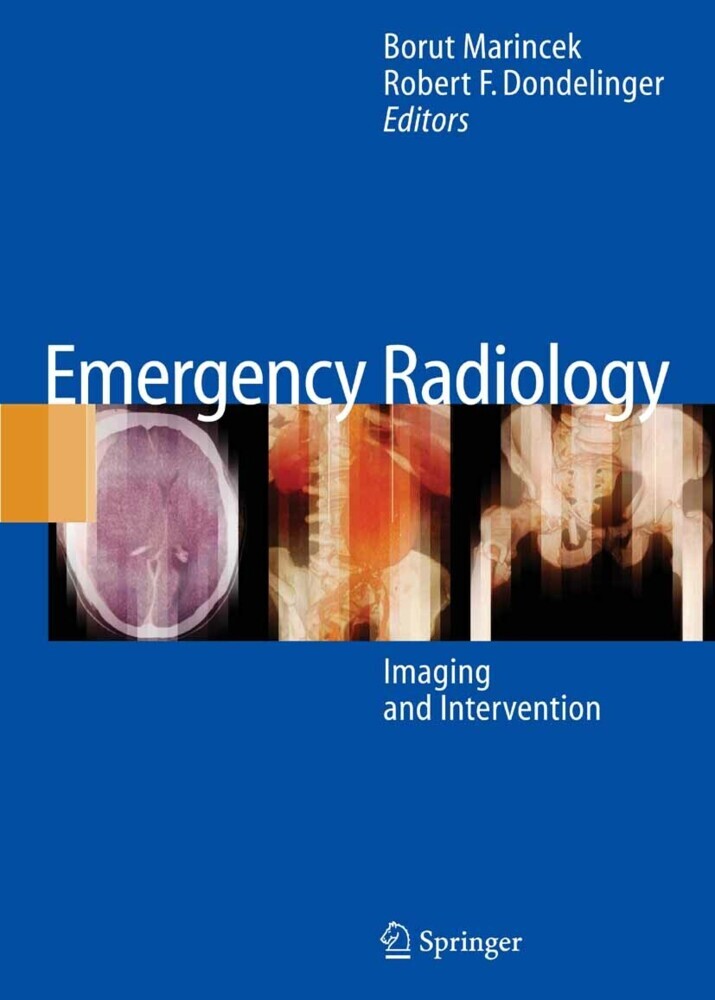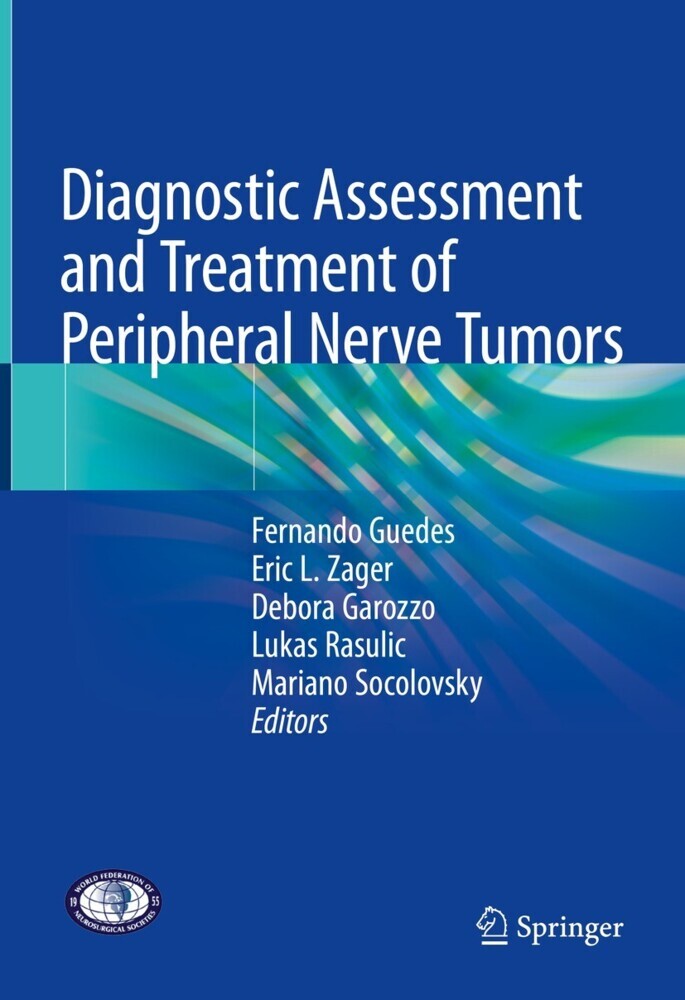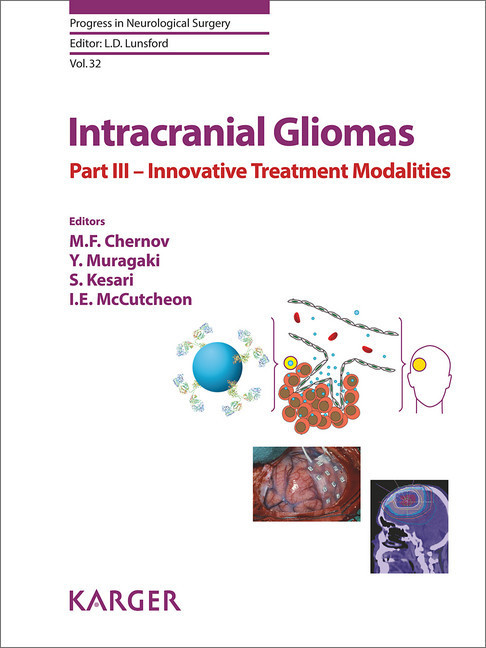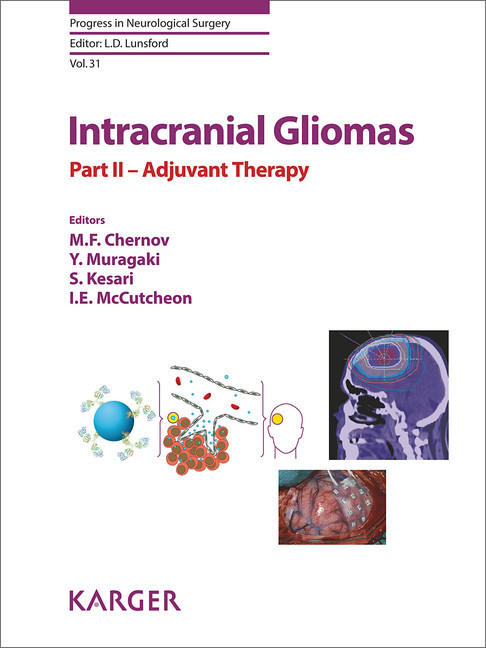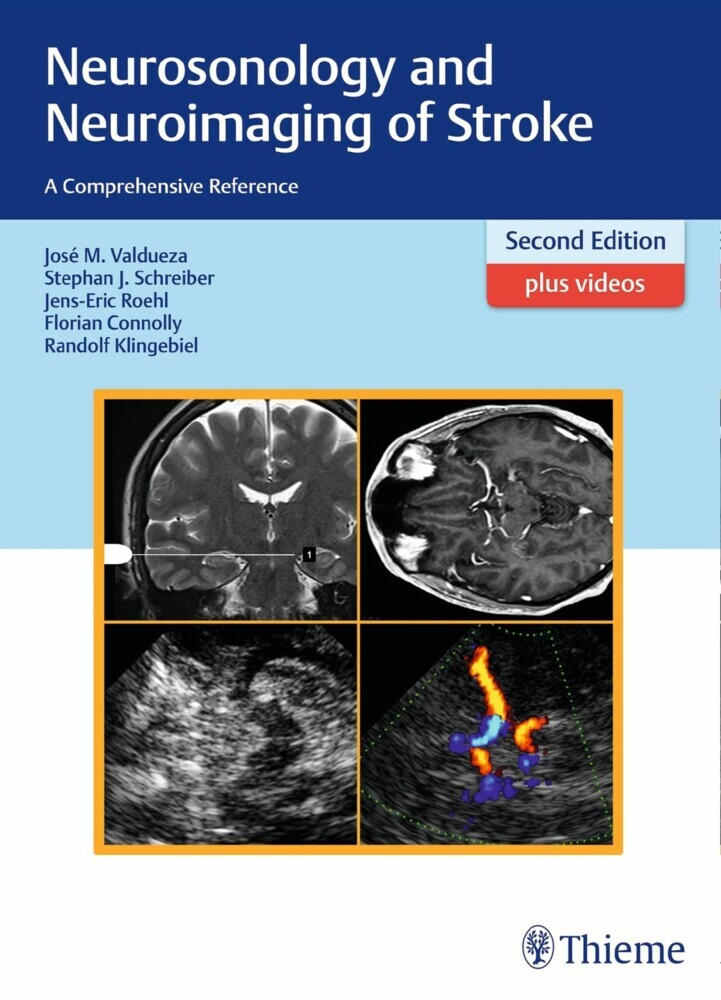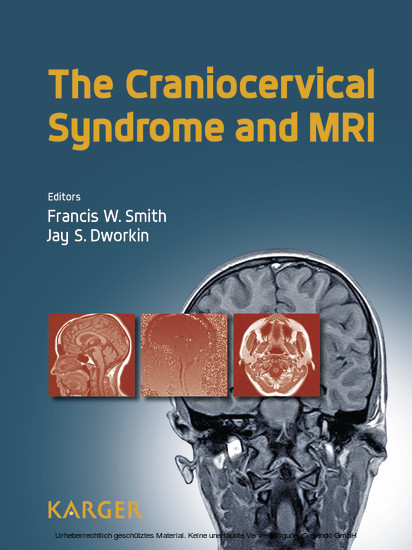Lumbar Spinal Imaging in Radicular Pain and Related Conditions
Understanding Diagnostic Images in a Clinical Context
Lumbar Spinal Imaging in Radicular Pain and Related Conditions
Understanding Diagnostic Images in a Clinical Context
A general consensus exists,that lumbosacral nerve root compression is the primary cause of sciatica and neurogenic claudication, although humoral and vascular factors certainly play a role as well. This book focuses on imaging the various ways in which nerve root compression can come about, and determining which anatomic features are reliably associated with the production of radicular pain. After a discussion of the nature of radicular pain and related symptoms, spinal imaging techniques and options are reviewed, with emphasis on the role of MR myelography in assessing the intradural nerve roots. A chapter on normal topographic, sectional, and functional radiologic anatomy is followed by presentations on pathologic anatomy, addressing mechanisms of nerve root compression, and on pre- and postoperative imaging. Features relevant to prediction of the natural history are discussed, and a section is devoted to the performance and reporting of a spinal imaging study.
1.3;Preface;4 1.4;Acknowledgements;6 1.5;Contents;7 1.6;Chapter 1;9 1.6.1;The Nature of Radicular Pain and Related Conditions;9 1.6.1.1;1.1 Introduction;9 1.6.1.2;1.2 Radicular Pain: Nomenclature and Pathogenesis;9 1.6.1.3;1.3 Neurogenic Claudication;12 1.6.1.4;1.4 Cauda Equina Syndrome;13 1.6.1.5;1.5 Conclusion;14 1.6.1.6;References;14 1.7;Chapter 2;16 1.7.1;Imaging Techniques for the Lumbar Spine: Conventional Radiology, Computed Tomography; Magnetic Resonance Imaging;16 1.7.1.1;2.1 Introduction;16 1.7.1.2;2.2 Conventional X-ray Studies;16 1.7.1.2.1;2.2.1 Contrast Studies:;17 1.7.1.3;2.3 X-Ray Computed Tomography;19 1.7.1.3.1;2.3.1 CT Myelography;21 1.7.1.4;2.4 Magnetic Resonance Imaging (MRI);22 1.7.1.4.1;2.4.1 T1-Weighted (T1-W) Images;25 1.7.1.4.2;2.4.2 T2-Weighted (T2-W) and T2*-Weighted (T2*-W) Images;25 1.7.1.4.3;2.4.3 Proton Density-Weighted (PD-W) Images;28 1.7.1.4.4;2.4.4 Fat-Suppressed Images;28 1.7.1.4.5;2.4.5 MR Myelography:;28 1.7.1.4.6;2.4.6 Imaging Planes;34 1.7.1.4.7;2.4.7 Upright Imaging;35 1.7.1.4.8;2.4.8 Considerations of Field Strength;35 1.7.1.4.9;2.4.9 Abbreviated Scanning Protocols;35 1.7.1.4.10;References;36 1.8;Chapter 3;38 1.8.1;Normal Anatomy;38 1.8.1.1;3.1 Topographic Anatomy;38 1.8.1.2;3.2 Sectional Anatomy;49 1.8.1.2.1;3.2.1 Transverse Sectional Anatomy;49 1.8.1.2.2;3.2.2 Sagittal and Coronal Sectional Anatomy;54 1.8.1.3;3.3 Functional Anatomy;55 1.8.1.4;References;63 1.9;Chapter 4;65 1.9.1;Pathologic Anatomy and Mechanisms of Nerve Root Compression;65 1.9.1.1;4.1 Herniated Disc;65 1.9.1.1.1;4.1.1 Why Are Disc Herniations Diagnosed So Rarely in the Upper Lumbar Region?;85 1.9.1.1.2;4.1.2 Other Focal Mass Conditions Causing Intraspinal Compression of Nerve Roots;93 1.9.1.1.2.1;4.1.2.1 Tumours;93 1.9.1.1.2.2;4.1.2.2 Synovial (Juxta-Articular) Cysts;93 1.9.1.1.2.3;4.1.2.3 Hypertrophic Callus Formation in Spondylolysis;93 1.9.1.2;4.2 Narrowing of Spinal Canal; General or Regional;93 1.9.1.2.1;4.2.1 Why Is Narrowing of the Spinal Canal Seen So Rarely at L5-S1?;99 1.9.1.2.2;4.2.2 Factors Further Contributing to Reduction of Space in the Spinal Canal;99 1.9.1.3;4.3 Regional Spinal Narrowing;101 1.9.1.4;Appendix : Morphometrics of Lumbar Intraspinal Structures, A Literature Review;116 1.9.1.5;Measurements in Normals and Patients, Static;116 1.9.1.6;Measurements in Normals and Patients, Dynamic;116 1.9.1.7;Imaging Features of Compression of Individual Nerve Roots and Cauda Equina;117 1.9.1.8;References;117 1.10;Chapter 5;120 1.10.1;Spinal Imaging in Relation to Surgical Therapy: Pre- and Post-Operative;120 1.10.1.1;5.1 Introduction;120 1.10.1.2;5.2 Pre-Operative Imaging;120 1.10.1.2.1;5.2.1 Is the Lesion Responsible for the Presenting Symptoms?;120 1.10.1.2.1.1;5.2.1.1 Radiologic Features of a Disc Lesion Related to Clinical Significance: Shape and Size;121 1.10.1.2.1.2;5.2.1.2 Assessment of Relative Size of the Herniation with Respect to Dimensions of the Canal;122 1.10.1.2.1.3;5.2.1.3 Imaging of Nerve Root Compression: MR Myelography;124 1.10.1.2.1.4;5.2.1.4 Intravenous Contrast Studies of Nerve Root Enhancement;128 1.10.1.2.1.5;5.2.1.5 Conclusion;128 1.10.1.2.2;5.2.2 Is the Condition Likely to Follow a Favourable Early Natural Course, or Is Conservative Management Likely to Fail in the Long Run, and Is Early Surgery Preferable?;131 1.10.1.2.2.1;5.2.2.1 Shape and Size of the Herniation, Nerve Root Compression, Concomitant Pathology;136 1.10.1.2.2.2;5.2.2.2 Gadolinium Enhancement of the Herniated Disc;137 1.10.1.2.3;5.2.3 Conclusion;137 1.10.1.3;5.3 Post-Operative Imaging;137 1.10.1.3.1;5.3.1 Introduction;137 1.10.1.3.2;5.3.2 Normal Post-Operative Findings;140 1.10.1.3.3;5.3.3 Residual or Recurrent Disc Herniation and Epidural Scarring;140 1.10.1.3.4;5.3.4 Spondylodiscitis;142 1.10.1.3.5;5.3.5 Hematoma, Pseudomeningocele;147 1.10.1.3.6;5.3.6 Arachnoiditis;149 1.10.1.4;Appendix;159 1.10.1.5;References;160 1.11;Index;163
Wilmink, J.T.
| ISBN | 9783540938309 |
|---|---|
| Artikelnummer | 9783540938309 |
| Medientyp | E-Book - PDF |
| Auflage | 2. Aufl. |
| Copyrightjahr | 2010 |
| Verlag | Springer-Verlag |
| Umfang | 161 Seiten |
| Sprache | Englisch |
| Kopierschutz | Digitales Wasserzeichen |

